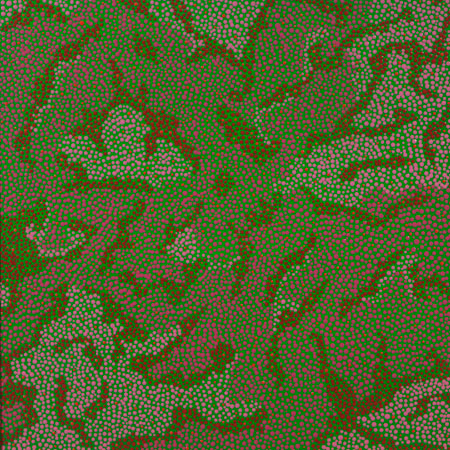Stedman Upham |
|||||
 |
|||||
Spring Hillside Southern California 2003 | 36x36 Acrylic on Canvas | 332.16.05 |
|||||
Pointillism is traditionally known as a method of applying paint using small distinct dots of pure color in a pattern that, in the end, forms a complete image. This technique is employed in Steadman Upham’s work. Using pointillism as a spring broad, Upham’s paintings reference southwest imagery and aboriginal art instead of the known conventional pointillist approach of straightforward narrative. When discussing his work, Steadman has written “"When I sit down to paint, it is all about the color for me. I've been painting on and off throughout my adult life, and each canvas that I touch becomes a journey around the colors that I mix. I am very fussy about the paint I use. I paint with acrylic gel that I mix with Nova Color pigments and thin with gel medium and water. The heavy pigment load of Nova Color paint produces a vibrancy and texture that I find fits my pointillist style perfectly. Pointillism relies on the application of pure colors that are juxtaposed in a complimentary or split complimentary manner to create visual drama and movement on the canvas. In this regard, the subject of the painting is of secondary importance to the play and interaction of the colors used by the artist. Traditional pointillist paintings rely on a white ground, but I have found that by varying the color of the ground across the spectrum, greater movement and color contrasts can be created. The paintings I create in this style are thus measured explorations of color. My paintings are also very tactile, and I encourage the viewer to touch them lightly to experience the geography of the paint." |
|||||
© 2016 Inland Empire Museum of Art |
|||||

